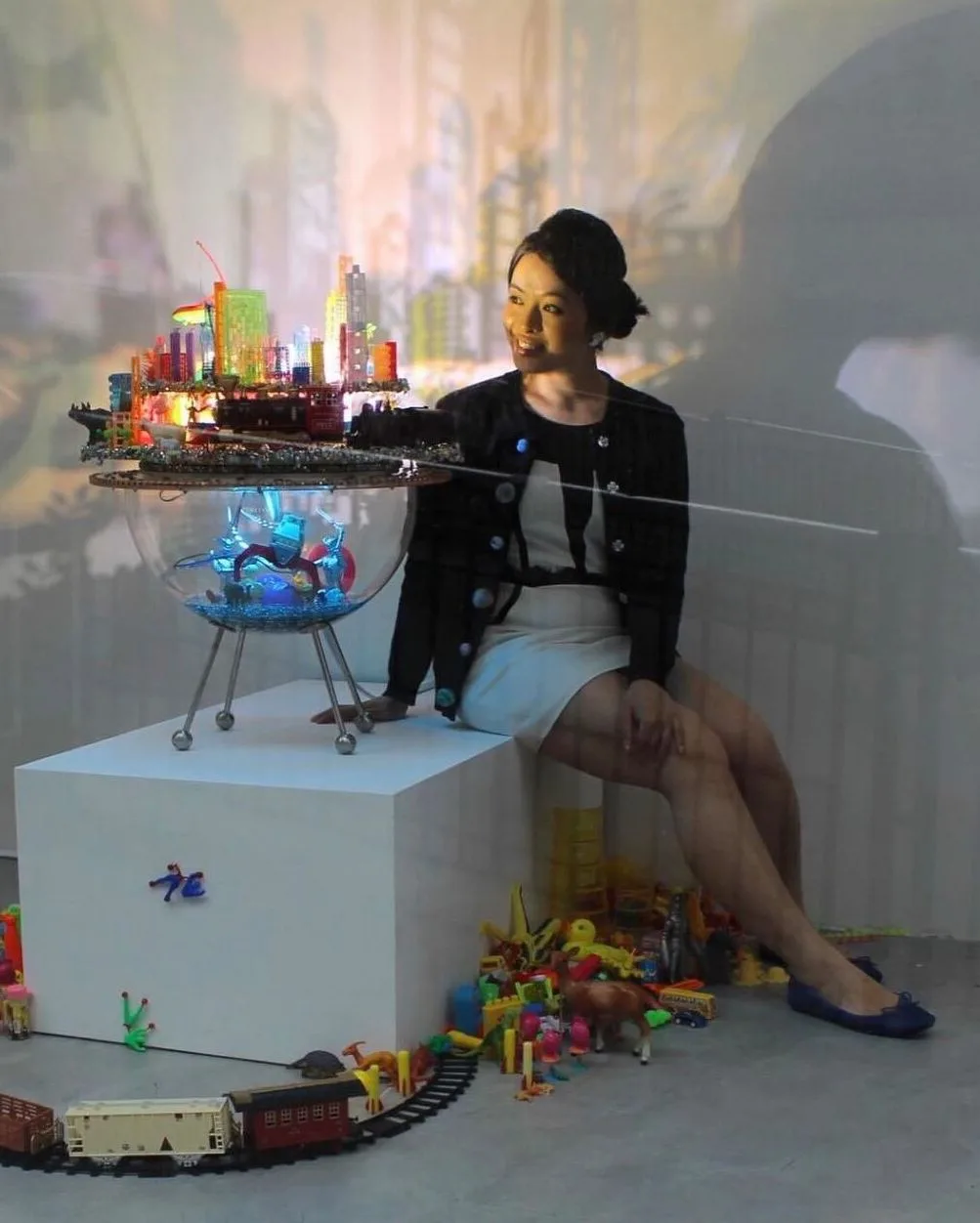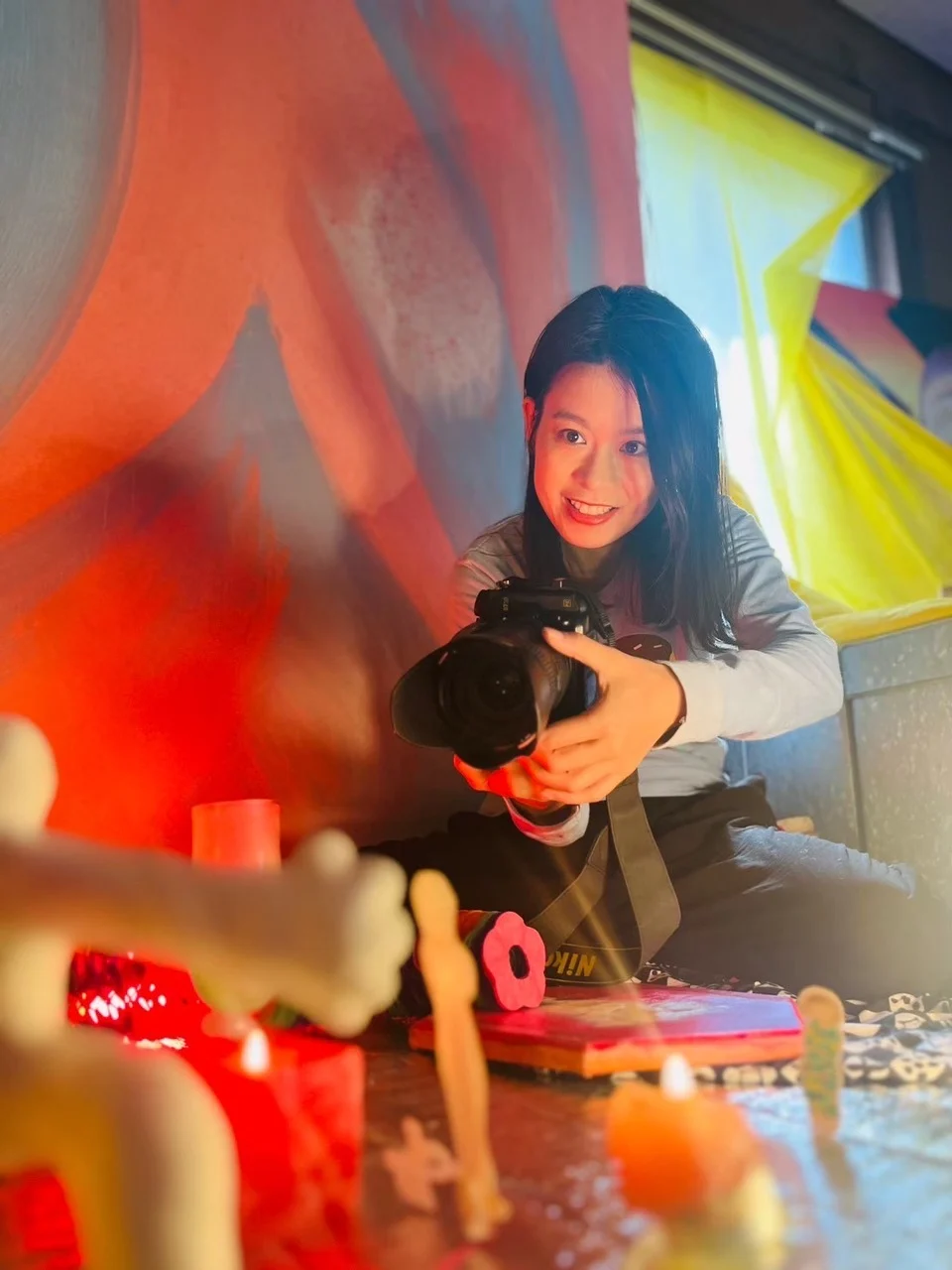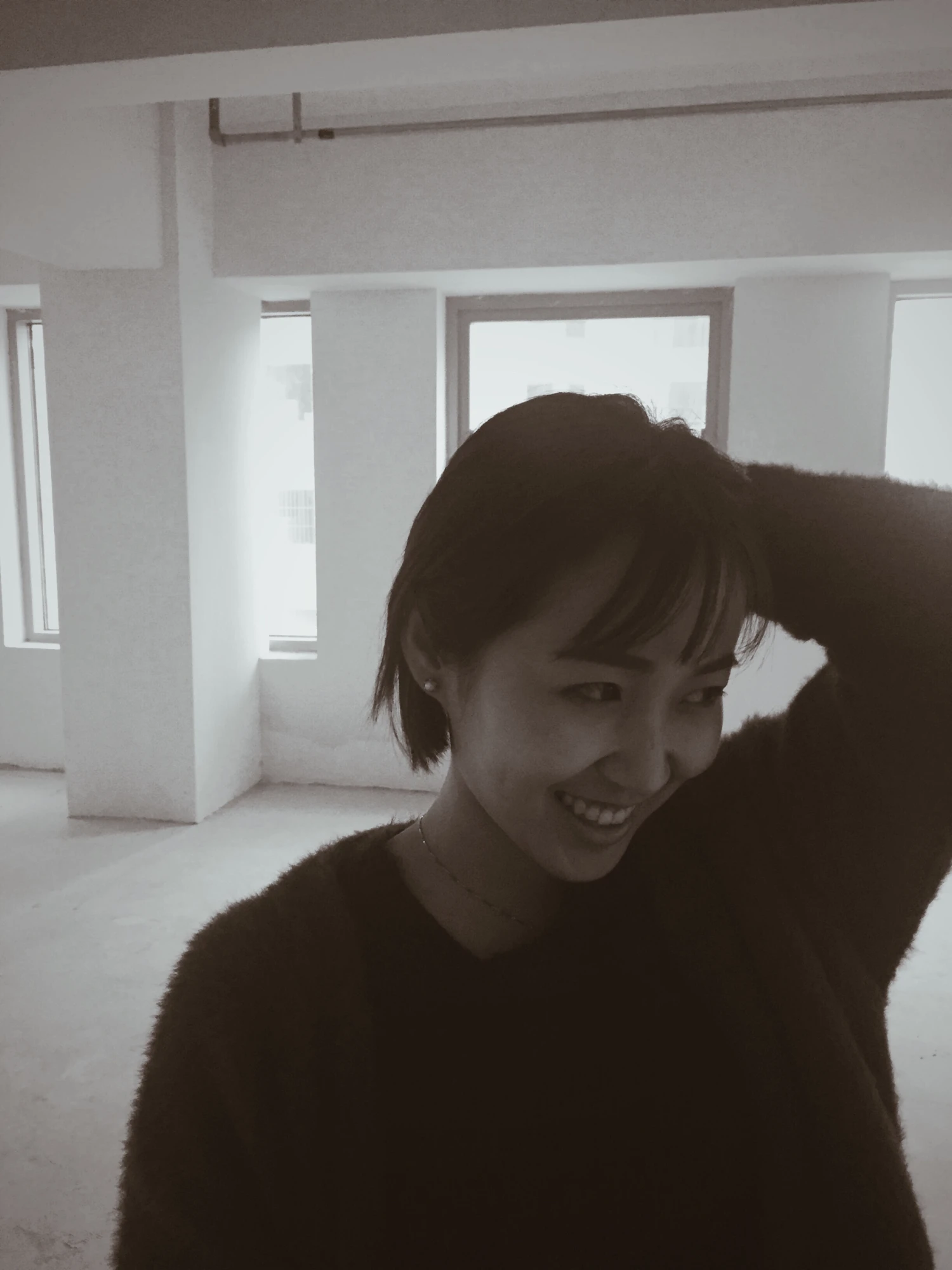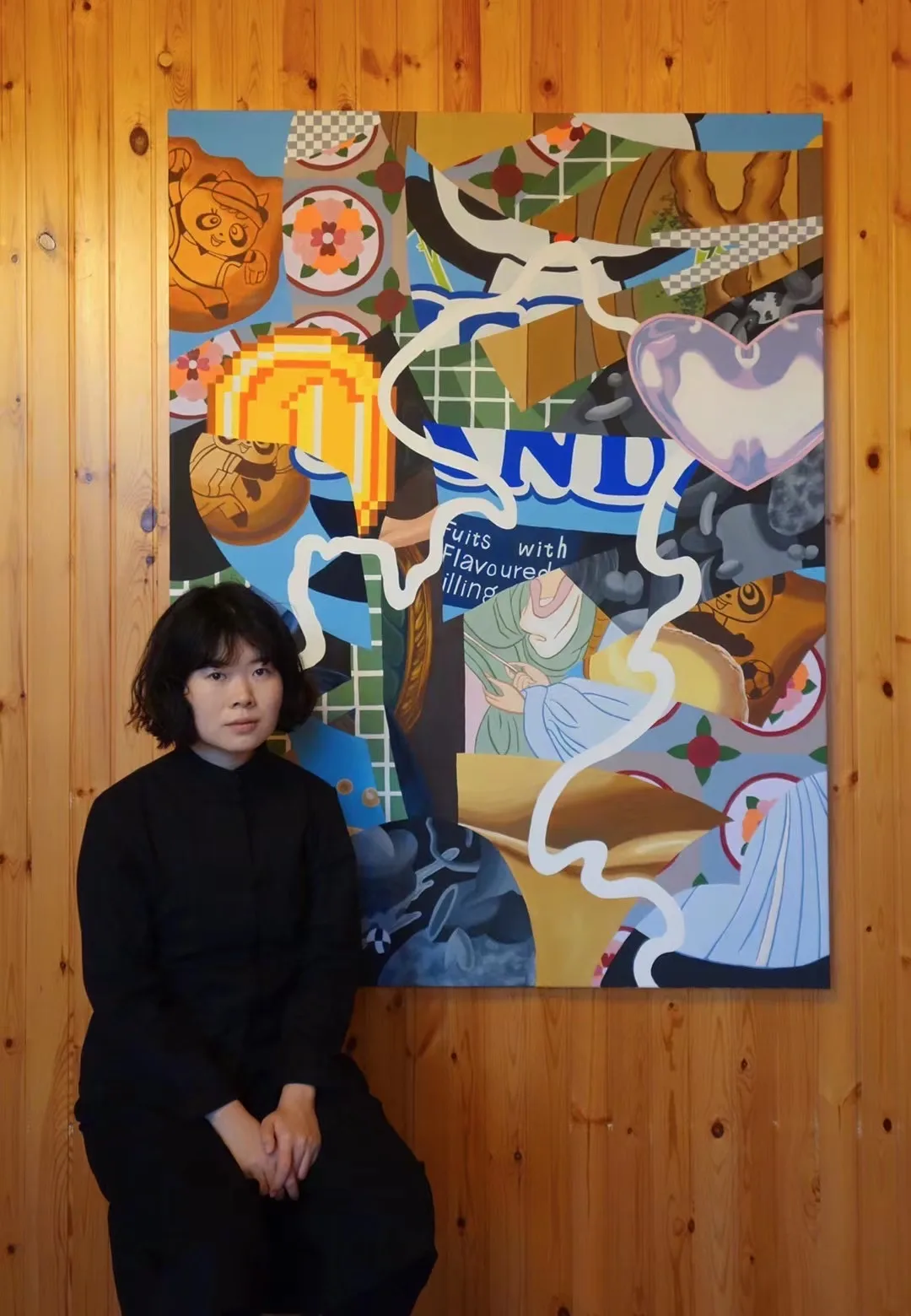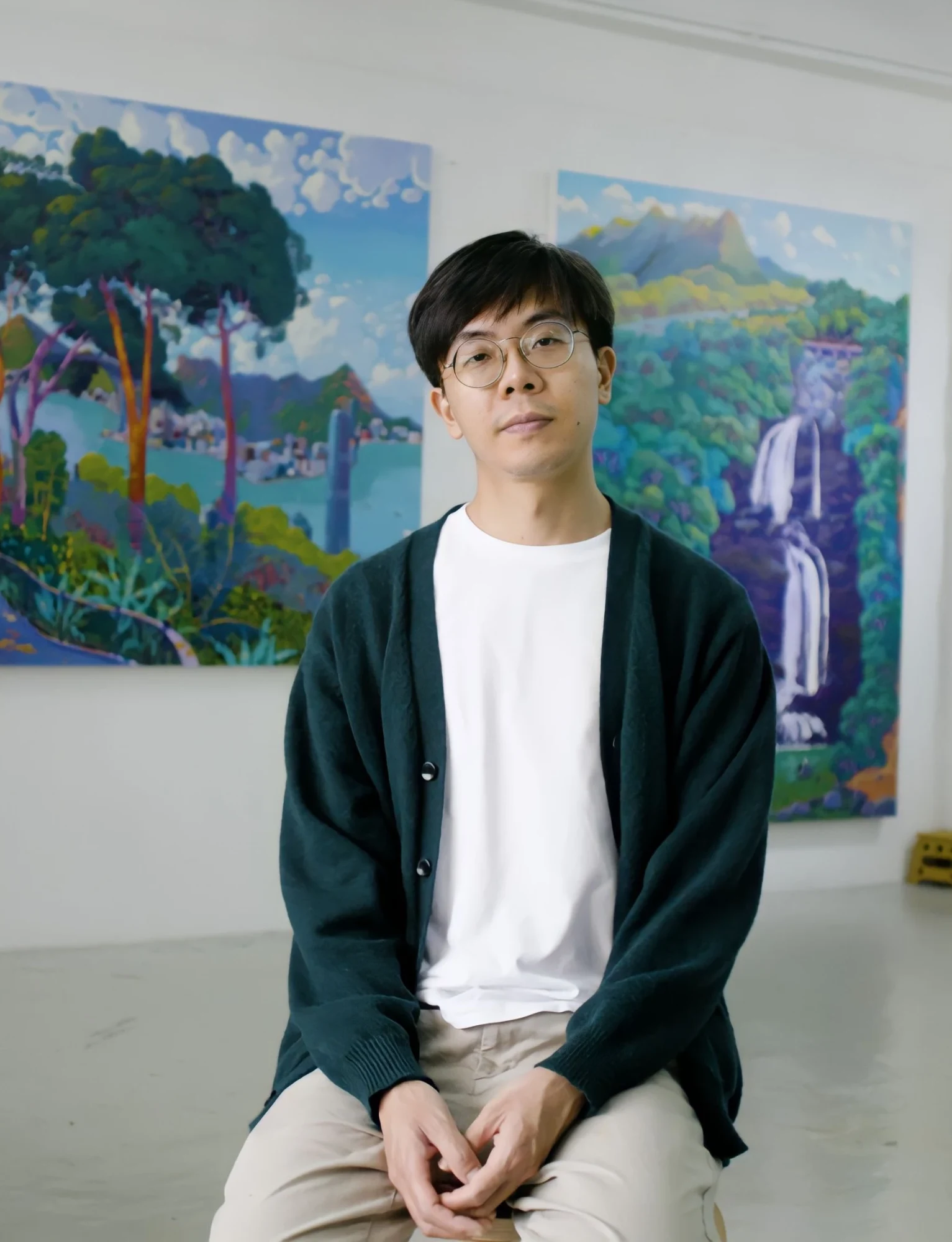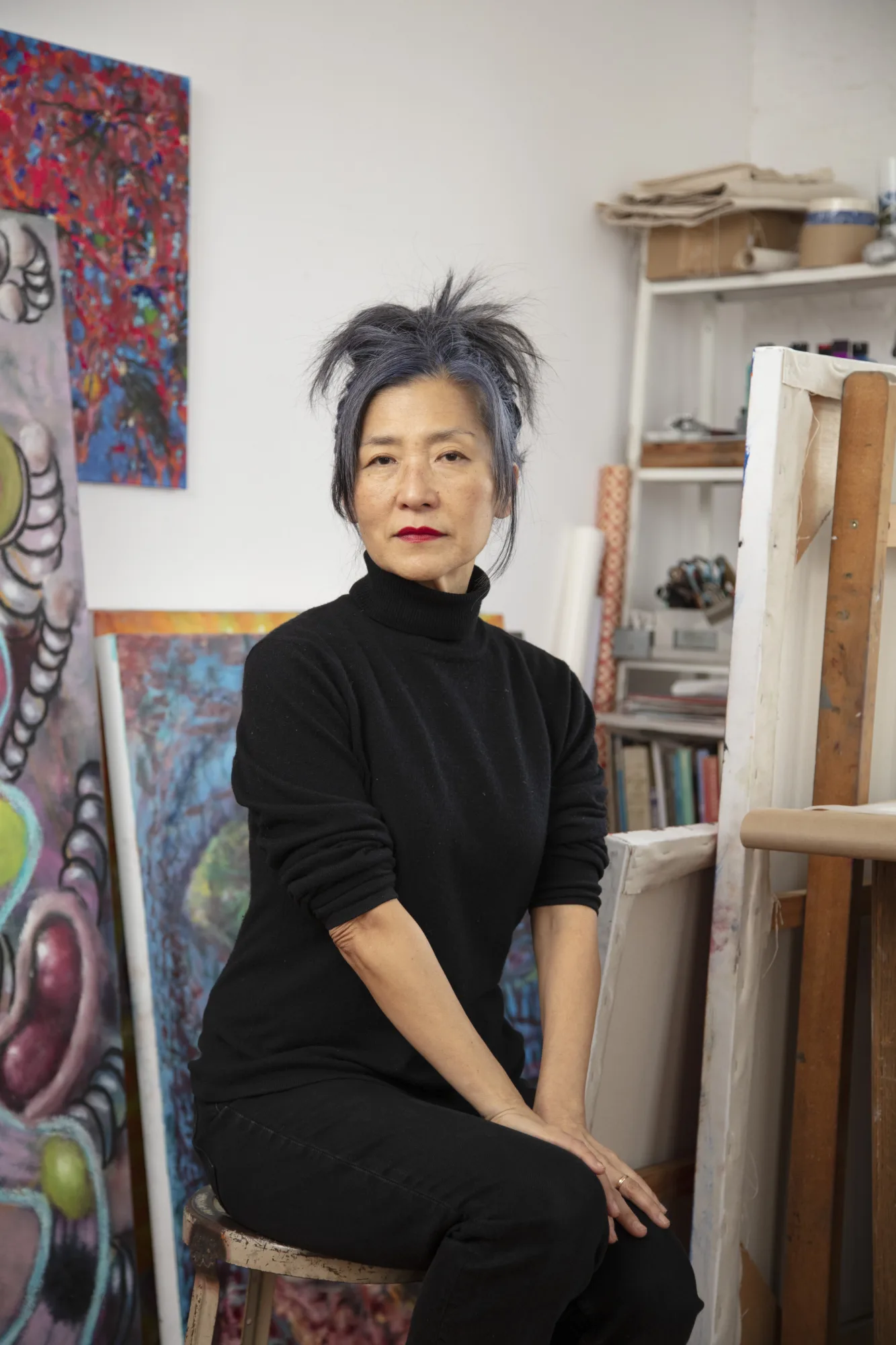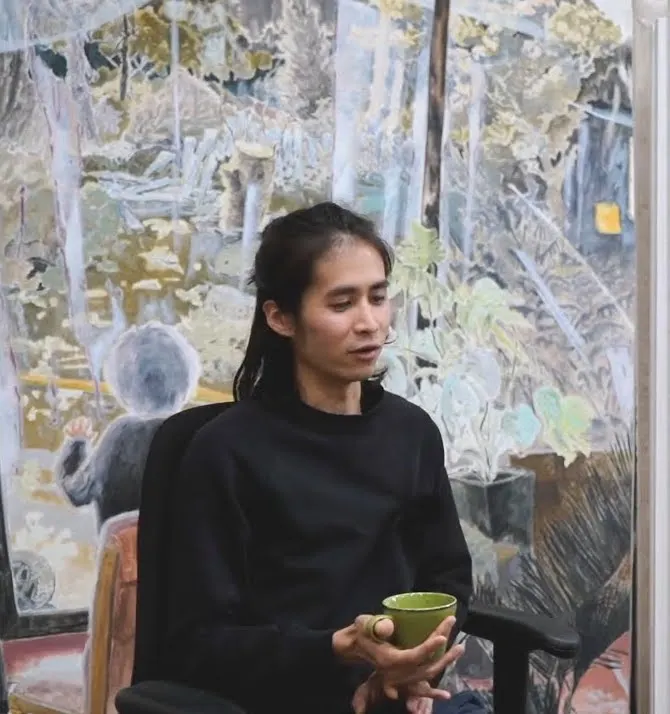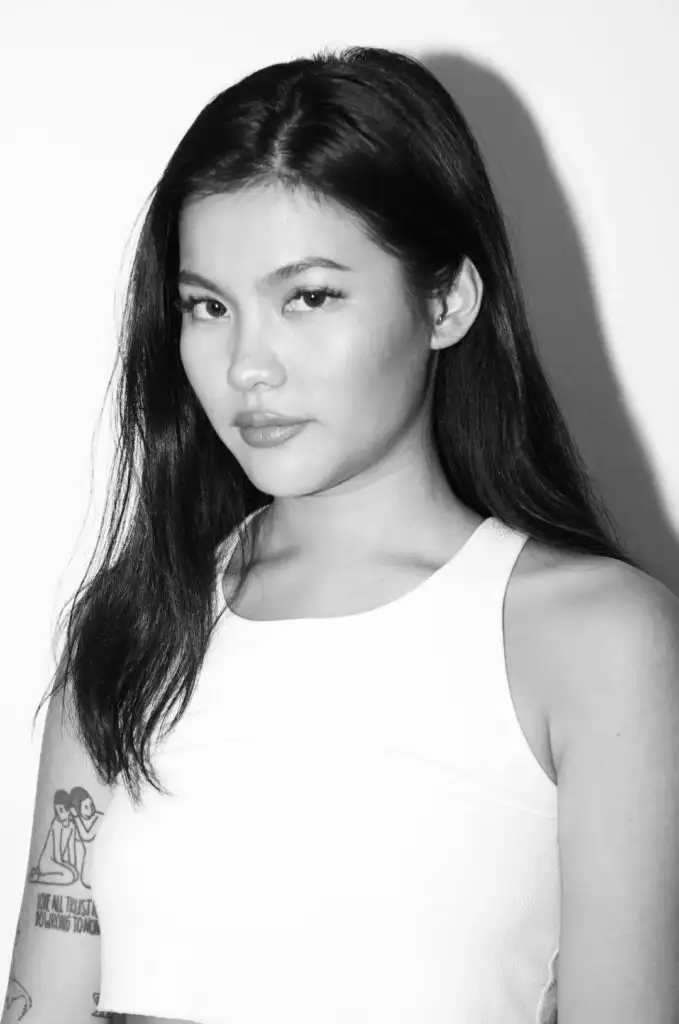Overview
An estuary is a geographical point where rivers meet the sea, a liminal zone where two distinct realms merge and nurture each other.
There is no subject of subordination in this relationship. The ‘mainstream’ dissipates – rivers diverge into streams, streams aggregate into the ocean – a point in time and space where intersectional fluidity breeds a complex and diverse ecosystem.
In Dreamscape Estuary, we find a convergence of cultural currents, a place where the dreams and visions of artists flow together, forging a unique and vibrant estuary of artistic expression. The title of the exhibition Dreamscape Estuary serves as a metaphorical bridge between the ethereal and the tangible, the historical and the mythological, the personal and the universal – a complex micro-landscape where individuality unites and integrates into collective consciousness, and cultural memories forge into myriads of private narratives. The exhibition brings together a group of 14 talented Asian artists with various backgrounds and experiences that straddle multiple geographies and cultures. In each of their works, ideas, memories and landscapes are distilled, amalgamated, abstracted or entirely imagined, weaving a rich tapestry of personal mythology that resonates with the complexities and contradictions of Asian experiences.
In the ancient allegory of Chuang Tzu’s butterfly dream, the philosopher questioned whether he was a man dreaming of being a butterfly or a butterfly dreaming of being a man, challenging our perception of truth and identity. Similarly, an artwork opens up an estuary of dreams, a portal where private realities and cultural consciousness blur, merge, or contradict. In a way, the dreamscape is fluid and everchanging. Through the complex and often tumultuous waters of identity, memory, and tradition, perhaps art can offer us a glimmer of insight into what’s in between.
Curator
Laura Shao is the Director of International Development at Hive Center for Contemporary Art. She holds dual degrees in Linguistics and Screen Studies from Fudan University and the University of Manchester. With her expertise in global Asian artists, Shao helps them to develop internationally through strategic interactions with the greater ecosystem of art among institutions, galleries, academics and private collectors. Before joining Hive, Laura Shao was a 20th and 21st Century Art specialist at Christie’s. She has participated in planning and curating several innovative projects, including RADIANCE: Jean-Michel Basquiat, the first major exhibition of Basquiat in Hong Kong. She works between Beijing, Shanghai and Hong Kong.
Works selected for the show aim to transcend geographical boundaries and offer a glimpse into the shared dreams and aspirations of artists who draw from their roots while engaging with global dialogues. Xia Yu (b.1981, China) and Tan Yongqing (b.1990, China)’s works contemplate the relationship between the human and the universe through their meticulous crafts of portraiture. In River and Portrait of A Man, the protagonist gazes skyward, his face glistening with white light, evoking the poignant quest for a brighter tomorrow. His image juxtaposed with a narrow glimpse of a river, perhaps a symbol of the passage of time or the perpetual force of nature. But what does that future look like? In Black Heart, Tan portrayed an astronaut looking down into the deep shadow of the galaxy, as if excavating archaeological evidence of our own existence.
While some look out to the outer world in search of meaning, others delve into the boundless, often enigmatic realm of our subconscious, where memories, emotions and myths converge and forge new connections of realities. Indonesia-born Natisa Jones (b.1989, Indonesia) draws inspiration from her cross-continental experience in Thailand, Australia and the Netherlands. In her work, the body turns into a vehicle that transports one from physical experience into spiritual journeys. The spiral lines mirror the staircases in her childhood home in Bali as well as her studio in Amsterdam, an intricate piece of architectural motif that connects and convolutes the private and the public, the past and the current. A similar tremble from displacement can be sensed in the work of Mie Yim (b.1963, Korea), who left Korea for Hawaii at a young age and later moved to New York to pursue her artistic career. Feelings of uncertainty and estrangement spring into kaleidoscopic forms and explosions of vibrant palettes. Wang Xinyan (b.1995, China) shares this psychological intensity. Profoundly interested in petroglyphs and rituals from prehistoric civilisation, Wang uses painting as a vessel for the visualisation of her subconscious, igniting raw, primitive energy to illuminate the pathway to innermost emotional landscapes. Cats, the night sky, the shimmering lake of Chicago – fragments from her everyday life around the world are amalgamated into a cathartic and pictorial exploration of her identity.
Moving through the exhibition, the viewers are invited to embark on a treasure hunt that recollects, through various media, childhood objects endearing to each artist. Wang Ziping’s (b.1995, China) latest sculpture edition is a fascinating totem pole that wields the seductive power of sugar-coated sweets and the magnetic fields of celestial bodies at once. Angela Yuen (b.1991, Hong Kong) carefully assembles found objects from vintage markets, a vestige from Hong Kong’s rapid urban development, and translates the familiar into a new Dada-ist dreamland that permeates love and nostalgia. Wang Wenting (b.1985, China) recalls the magical moments as a kid watching incandescent substances transform in states and shapes in a smelting plant, which harks back to mankind’s earliest astonishment at alchemy. Ma Hailun (b.1992, China) infuses the audacity and theatricality of her practice of high-fashion photography into the representation of the people from her hometown Xinjiang, forming a refreshing language that unbashfully expresses the vernacular beauty.
As the world gets ever more lost in translation in today’s Babel Tower of divided ideologies from social media, many artists resort to vocabularies of surrealism to form their personal gesticulation and connect with the viewers. In Aya Ito’s (b.1987, Japan) work, the figure enters a state of vacuum where rules of gravity and physical reality are distorted or even dispelled. Her canvas morphs into a psychological space, richly layered with possibilities. Joyously waltzing with the endless whirls of destiny, the artist poses the question ‘Where am I going’ to her many selves in the parallel universes. Contrarily, the self is concealed in Lin Shan’s (b.1988, China) allegorical works. Having majored in fresco at the China Academy of Art and then received her master’s degree in painting from Accademia di Belle Arti di Venezia in Italy, Lin’s anthropomorphic depiction of objects explores the dilemma of rationality and desire. Painstakingly she slides the brush against shaped aluminium boards to create a silk-like surface with haptic details, rendering “portraits” of indoor flowers and still life against backgrounds of open wilderness, alluding to the lust for freedom and its impending punishment.
In face of the grand torrents of history, trivialities of life seem so very vulnerable yet precious that can only be shielded and preserved by artistic geniuses. Cheung Sze Hin’s (b.1987, Hong Kong) and Stephen Wong’s (b.1986, Hong Kong) works are both powerful statements of the tenacity and healing power of art. While Cheung finds fleeting sparks of divinity through microscopic scenes of the forgotten and dilapidated, Wong unveils the majesty of nature by taking the viewers on an otherworldly hike through every detail from his visual memories and imagination.
The youngest artist of the show, Lu Yu (b.1996, China) is a prime example of a new generation of artists who wander through idyllic reveries in an age saturated with digital imagery. Her Peace Lily, painted with generous sculptural volume, is a testament to the eternal search for classic grace and simplicity in the contemporary world.
Dreamscape Estuary coincides with Frieze London 2023, one of the key events in the global art calendar. At a time when heightened global connectivity hails the beginning of a post-pandemic era, it is easy to forget the peril of deglobalisation lurking beneath the surface of political and ideological instability. Why does cultural identity matter in a hyperconnected world where places and cultures are connected with a click or a flight? What does it mean to be Asian (artists)? The show is by no means a utopic fantasy of a united vision of Asian artists today nor a passive viewing experience to dictate what it should be. It is an invitation to embark on a journey of discovery and connection to a fluid micro-landscape of dreams – a dreamscape where lives and stories meet and connect.
Selected Works
Lu Yu
Peace Lily
2023
60 x 60 cm
Tan Yongqing
Dark Heart
2023
60 x 60 cm
Wang Xinyan
Exodus IV
2023
180 x 120 cm
Lin Shan
Calla Lilies Dance No.3
2023
61 x 76 cm
Aya Ito
Where are you going
2012
180 x 160 cm
Stephen Wong
The Fire
2023
150 x 200 cm (framed)
Ziping Wang
Sweet Wind From the South
2023
50 x 13 cm
Hailun Ma
Xinjiang Fashion Guide II
2020
100 x 69 cm (framed)
Natisa Jones
Precious Cargo II
2023
150 x 120 cm
Xia Yu
River and Portrait of a Man
2021
40 x 50 cm
Wang Wenting
Flaming Night
2023
160 x 120 cm
Cheung Tsz Hin
dancing on the branches
2023
120 x 120 cm
Mie Yim
Peyote
2023
152.4 x 142.24 cm
Angela Yuen
The Dreamer III
2023
39 x 34 x 41 cm
Catalogue
Exhibition Catalogue
Explore the full selection of artworks, additional curatorial texts and more.
exhibitions, artists and events.
